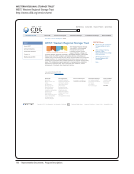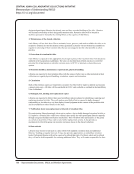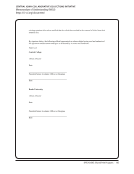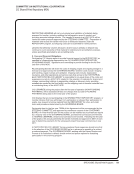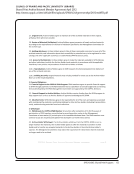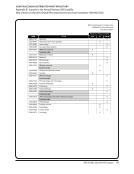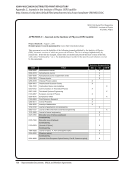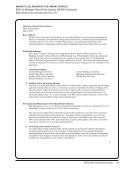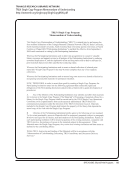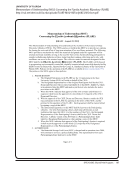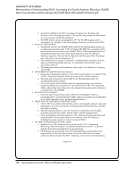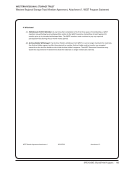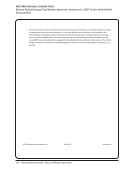SPEC Kit 345: Shared Print Programs · 77
Programming and maintenance upgrades to the DOCLINE system. Reports to MedPrint users, upkeep of
MedPrint website.
The California Digital Library provides a shared print manager, collections analyst, and bridge funds until campuses
(members) can fully absorb program costs.
These are group decisions. All group decisions are made by the governance group.
13. Are there plans to distribute retention responsibilities more broadly? N=21
Yes 9 43%
No 12 57%
If yes, please briefly describe the plans. N=9
Expansion plans for 2015/16 are underway adding 3 to 5 new members.
If first institution does not wish to add to their collection, other institutions are queried as to their interest and
willingness to do so.
In the fall we anticipate receiving a list of titles from TRLN (Triangle Research Libraries Network).
More projects, more plans are under development.
Shared print in place agreements for prospective and retrospective monograph collections.
To date we have only archived journal back runs next phase of project will consider monographs, and we expect
retention commitments to be distributed among more participating libraries.
We anticipate that the group will grow in numbers, spreading the load. We also expect to appoint a project coordinator
in the near future. At some point it may be necessary to hire a part-time coordinator.
WEST plans to distribute Archive Holding responsibilities for low risk titles to as many as 60 institutions. Currently there
are 20 archive holders in WEST.
Will expand to other host sites as project grows. New host sites will be selected from within the existing
member libraries.
CHARACTERISTICS OF BUSINESS MODEL
14. Please briefly describe the business model for this shared print program. N=18
All program participants share costs equally, contributing funds for program management and collection building.
Any TRLN library may identify and offer materials. Processing of materials carried out by TRLN Collaborative Print
Retention Program. Materials remain the property of contributing library.
As noted above the primary goal is conservation of space in the central facility. Operations are handled by central
staff and are funded by a) the assessment paid by each member institution, which covers access services, and b) the
one-time processing fee paid by the depositing institution, which covers accessioning, deduplication and recycling of
discarded materials.
Programming and maintenance upgrades to the DOCLINE system. Reports to MedPrint users, upkeep of
MedPrint website.
The California Digital Library provides a shared print manager, collections analyst, and bridge funds until campuses
(members) can fully absorb program costs.
These are group decisions. All group decisions are made by the governance group.
13. Are there plans to distribute retention responsibilities more broadly? N=21
Yes 9 43%
No 12 57%
If yes, please briefly describe the plans. N=9
Expansion plans for 2015/16 are underway adding 3 to 5 new members.
If first institution does not wish to add to their collection, other institutions are queried as to their interest and
willingness to do so.
In the fall we anticipate receiving a list of titles from TRLN (Triangle Research Libraries Network).
More projects, more plans are under development.
Shared print in place agreements for prospective and retrospective monograph collections.
To date we have only archived journal back runs next phase of project will consider monographs, and we expect
retention commitments to be distributed among more participating libraries.
We anticipate that the group will grow in numbers, spreading the load. We also expect to appoint a project coordinator
in the near future. At some point it may be necessary to hire a part-time coordinator.
WEST plans to distribute Archive Holding responsibilities for low risk titles to as many as 60 institutions. Currently there
are 20 archive holders in WEST.
Will expand to other host sites as project grows. New host sites will be selected from within the existing
member libraries.
CHARACTERISTICS OF BUSINESS MODEL
14. Please briefly describe the business model for this shared print program. N=18
All program participants share costs equally, contributing funds for program management and collection building.
Any TRLN library may identify and offer materials. Processing of materials carried out by TRLN Collaborative Print
Retention Program. Materials remain the property of contributing library.
As noted above the primary goal is conservation of space in the central facility. Operations are handled by central
staff and are funded by a) the assessment paid by each member institution, which covers access services, and b) the
one-time processing fee paid by the depositing institution, which covers accessioning, deduplication and recycling of
discarded materials.








































































































































